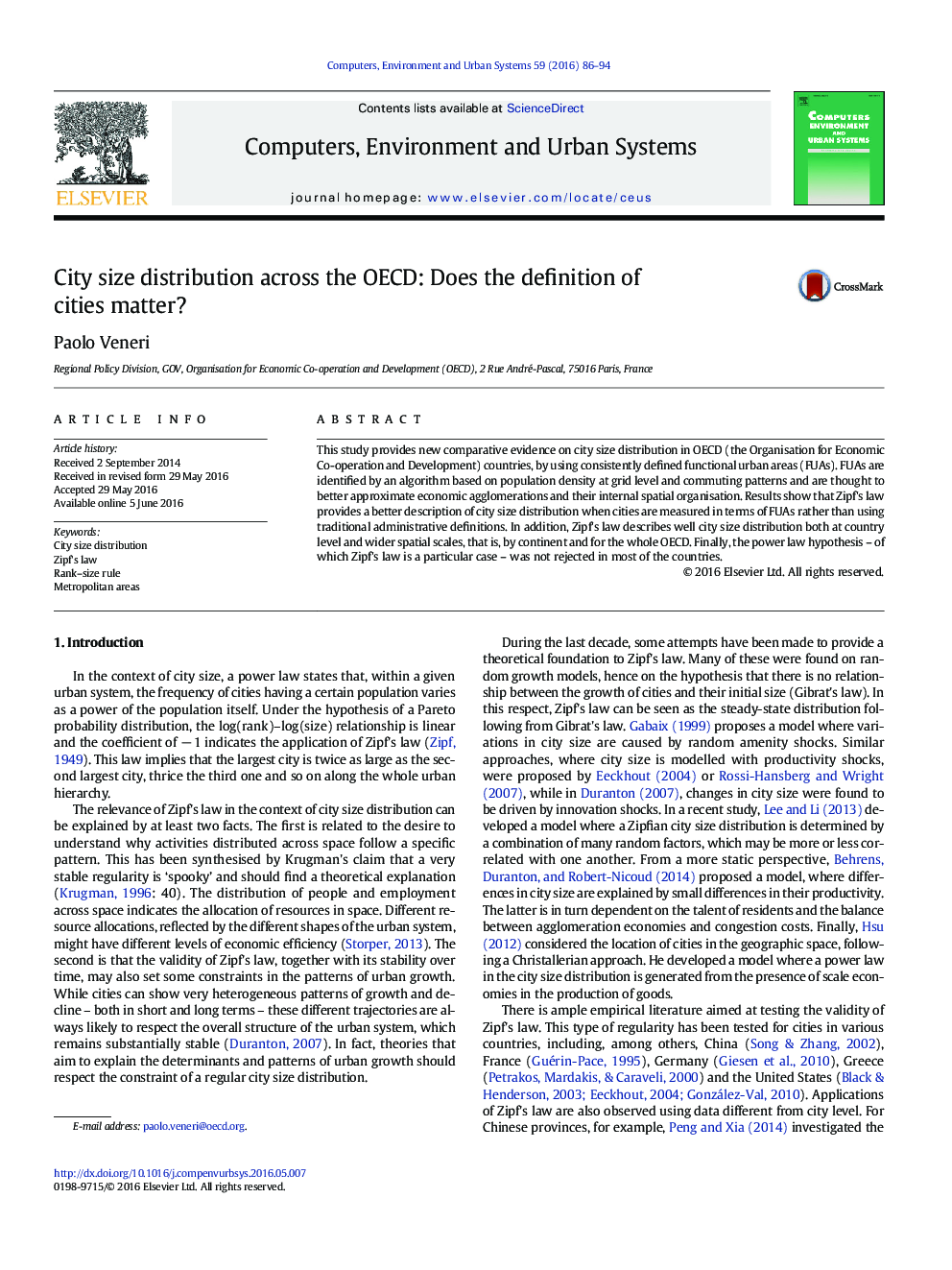| Article ID | Journal | Published Year | Pages | File Type |
|---|---|---|---|---|
| 506255 | Computers, Environment and Urban Systems | 2016 | 9 Pages |
•Using consistent city definitions, Zipf’s law describes well city size distribution both at country and wider scales.•The approximation of city size distribution by Zipf’s law is lower when using administrative city definitions.•In most of the countries, the power law hypothesis for city size distribution was not rejected.
This study provides new comparative evidence on city size distribution in OECD (the Organisation for Economic Co-operation and Development) countries, by using consistently defined functional urban areas (FUAs). FUAs are identified by an algorithm based on population density at grid level and commuting patterns and are thought to better approximate economic agglomerations and their internal spatial organisation. Results show that Zipf's law provides a better description of city size distribution when cities are measured in terms of FUAs rather than using traditional administrative definitions. In addition, Zipf's law describes well city size distribution both at country level and wider spatial scales, that is, by continent and for the whole OECD. Finally, the power law hypothesis – of which Zipf's law is a particular case – was not rejected in most of the countries.
